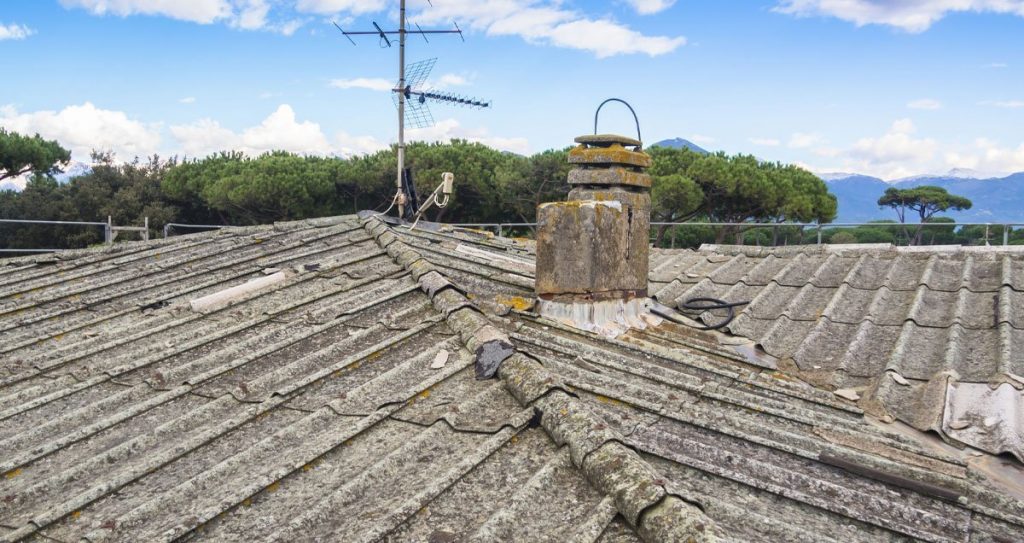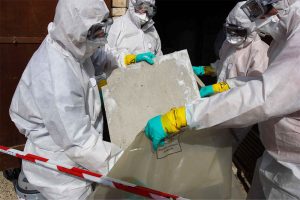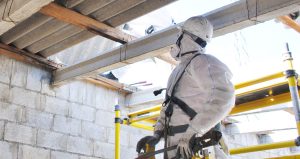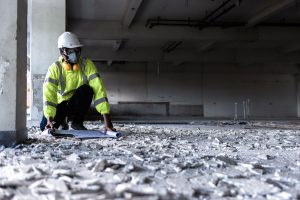Asbestos – The Invisible Killer
Asbestos has gained itself the title of ‘Invisible Killer’ because of the microscopic fibres which cause dire consequences for human health but are invisible to the naked eye. As a consequence it remains one of the biggest risks in the workplace, especially for people working in engineering and construction. It continues to cause around 5,000 deaths each year, despite a UK ban on the use of asbestos in 1999.
What is Asbestos?
Asbestos occurs naturally; it’s a mineral that can withstand extreme heat and flame. Early in the twentieth century it was considered a cheap and efficient insulator. As such it was used extensively in construction projects right up until the 1980s. By then the deadly effects of asbestos inhalation had become clear, and moves were made to stop its use. Its legacy remains, however and many of us live and work in buildings that contain asbestos.
When is Asbestos Dangerous?
Asbestos only becomes dangerous once it’s damaged or disturbed. When this happens, asbestos ‘dust’ disperses into the air and is breathed in by anyone in the vicinity. Despite being microscopic, asbestos particles are sharp and jagged which means that they can lodge in the lungs. This can lead to scarring (asbestosis) which causes pain and breathlessness, mesothelioma, or lung cancer.
What Does Asbestos Look Like?
Whilst asbestos is used in a number of applications, it tends to resemble ‘a ball of fuzz’, not unlike the look of loft insulation material. The microscopic fibres can be hard to identify. One woman who contracted mesothelioma in her later years, encountered it as a white dust when cleaning her husband’s work-clothes. It was only years later that she realised this constituted a daily dose of the fatal material.
Where Can Asbestos Be Found?
Asbestos is now hard-wired into our buildings and industrial sites. Here are a few of the most common applications it was used for:
- Spray Coating. Used for fire protection on steel girders, beams, trusses and on interiors to prevent condensation. A mix of cement and asbestos fibre was fired from a high pressure spray.
- Lagging. Created as pre-formed sections, or in a cement mixture that was trowelled into place. This form of asbestos can be found on pipes and other items of plant.
- Insulating Board. Made from calcium silicate, or cement mixed with asbestos. This was used in partition walls, ceiling tiles, heater cupboards and soffit boards. There were also inserted between layers of wood to make fire doors.
- Asbestos Yarn. Asbestos was woven into cloth for use in fire blankets, fire gloves and fire-protective clothing.
- Textured Paint and Plaster. Asbestos was added to paint to plaster to create a textured effect on application.
- Fibre Cement. This was used in wall cladding, boiler flues, pipes, soffit boards, bath panels, roofing, fire bricks and lintels.
How to Manage Asbestos Safely
Avanti provides safe and efficient asbestos management and removal. We’re HSE accredited experts offering surveys to ascertain whether your home or property contains asbestos. If we find that it does, we’ll arrange for its safe removal and disposal. Before we begin we’ll carry out air monitoring, and then repeat the process afterwards to ensure that the environment is risk-free.



